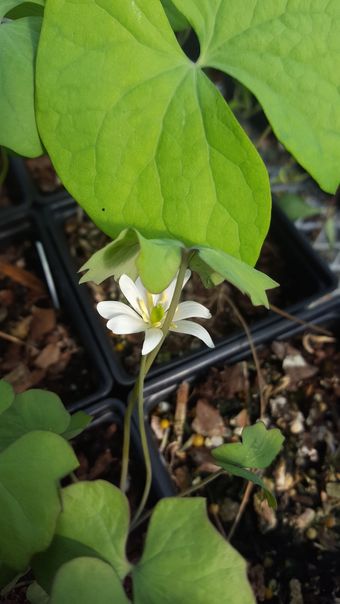Twinleaf is a somewhat uncommon Spring emphemeral that was named for natural history enthusiast Thomas Jefferson in 1792. The solitary white flowers last only a few days, often appearing about the time of Jefferson's birthday on April 13. The plant has unique two-part leaves said to resemble the wings of a butterfly. Attractive seed pods offer interest. It tolerates full shade and will thrive planted under the canopies of large deciduous trees. It grows in clumps about 1' tall. Can be used as a ground cover in shade, but it is best combined with other woodland plants because it will decline in mid- to late Summer. Twinleaf appreciates cool roots, so try mulching in the summer to help keep the roots protected. Source: Mt. Cuba Center
Twinleaf is native to eastern North America from Minnesota east to New York aand south to Tennessee. It is found in rich moist woods to semi-open rocky slopes and outcrops, usually over limestone or other calcareous rocks. The flowers produce no nectar, but they do produce copious pollen, which attracts pollinators, primarily bees. As with some other deciduous forest plants, twinleaf's seeds are dispersed by ants.
Photo by Kathy Thornton

